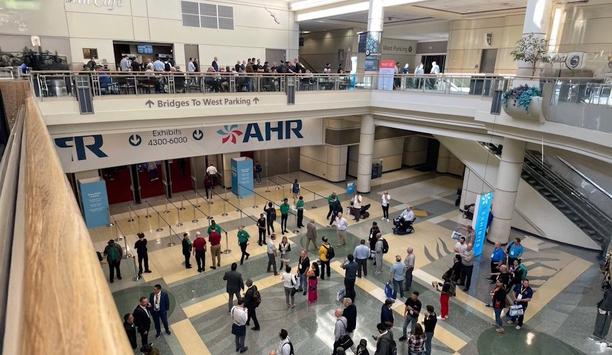The past six months have been busy for those in HVAC as offices are updated and made safe for people to return. In addition to the various standard checks that need to be carried out, more care is being taken in relation to air movement and filtration to prevent the spread of disease.
There is evidence that at least some of the COVID-19 virus can remain suspended in the air and infectious for up to 3 hours. While this is not the main form of transmission, it is vitally important, especially as we are seeing a second increase in infections, that all measures are taken to prevent the spread of the disease.
Sick building syndrome
In addition to the fundamental elements of HVAC in public buildings, the sector should be looking to the future of technological use; whether COVID-19 is completely wiped out or lingers in the population, we may be at risk of more new diseases in the future. Although maintenance is one of the least visible of building services, it has long played an important role in ensuring the health of buildings.
Decades ago, the concept of sick building syndrome was first introduced, showing quite how important our environment is to health. Now, we are being reminded of this on a daily basis in ways that have never been under such scrutiny. We are suddenly hyperaware of what we have touched and who else is breathing our air. In many ways, this new awareness of the unseen is a boon for the sector that has so long been behind-the-scenes, but it also puts it to the test.
Potentially stagnant pockets
There are numerous recommendations from experts on how to increase safety
Governmental guidelines have not specifically required that ventilation and air conditioning be increased in the workplace. Yet, there are numerous recommendations from experts on how to increase safety. At the low-tech end of the spectrum, the use of ceiling and table fans to increase movement in potentially stagnant pockets of air has been suggested. At the other end, technologies that have long been growing in popularity, such as remote monitoring, will really come into their own in the coming months.
A particular challenge for the industry as workers return to the office under social distancing guidelines will be accessing certain areas for maintenance. For as long as the virus remains in the population, risk assessments for work will be more complex and non-essential jobs will likely be put on hold where possible.
Optical remote sensors
Intelligent technology and monitoring systems are already driving the market and will play a role in minimizing contact with others when visiting a site. There is already a great range of tools available: wired sensors, wireless sensors, and optical remote sensors. These allow organizations to monitor vibration, temperature, acoustics, and the power of numerous assets remotely and in real-time.
Any issues can be addressed as soon as they arise, minimizing the cost and time that an engineer may need to be in the building. Installing these technologies while buildings are still unoccupied or only partially occupied will also reduce the risk of exposure of engineers to the virus and will improve the efficiency and prolong the life of important assets. Whether a second lockdown takes place or not, these tools will protect building services.
Motion-Activated air conditioning
Other sensor-based features such as motion-activated air conditioning also have great potential
Other sensor-based features such as motion-activated air conditioning also have great potential. These can manage the new hygiene anxiety which pervades public places at the moment. In the longer term, they can be a means of building sustainability practices into the workplace, using power only when needed. Internet of Things (IoT) features such as occupancy sensors have long been growing in popularity to create buildings which are more energy-efficient and promote productivity.
Many of these features are demonstrating added value during the pandemic. Occupancy sensors, for example, can be used to ensure that buildings do not exceed safe numbers for social distancing. HVAC systems will be integrated ever further into the IoT approach. Some features of virus reduction, however, have posed a challenge for systems.
Air conditioning systems
Air conditioning systems, for example, can best reduce the risk of viral transmission through increasing the amount of air which is brought in from the outside into the systems. This will reduce the amount of recycled air but will also increase the temperature fluctuations within the buildings. Other recommendations have included reviewing ventilation strategies, increasing ventilation operating times, deep cleaning filters, and replacing filters more often.
Cutting corners on anything which reduces the risk of virus spread will only be a greater loss to the client
All of these can potentially see an increase in time and cost required by the client at a time where many companies have been stretched financially. Cutting corners on anything which reduces the risk of virus spread will only be a greater loss to the client in the long run if their employees lose time to illness but it still may be a temptation.
Strong working partnership
FM providers must work closely with clients to understand their individual fears and needs in such turbulent times. For Anabas, we believe demonstrating expertise and experience is a means of reassuring organizations that they are in safe hands. The future of the pandemic is still unpredictable.
While its elimination is hopeful, it is still well worth the investment for many organizations to install the tools which minimize the risk of infection of COVID-19 - or any future infections. Clients are looking for certainty in an uncertain world and data-driven insights and real-time monitoring are ideal ways to provide this. However, the reassurance that comes with a strong working partnership will also be more important than ever. Communicating developments and what they mean for the client, as well as assuring them their priorities are understood can set a provider apart.




















